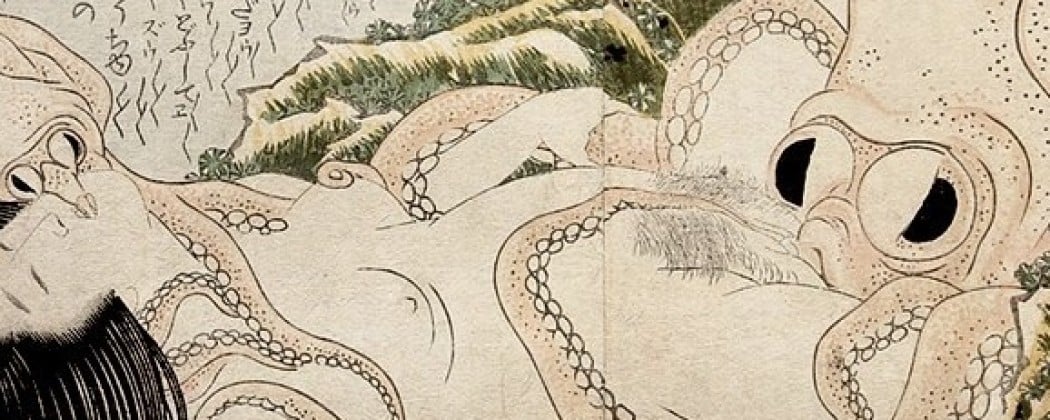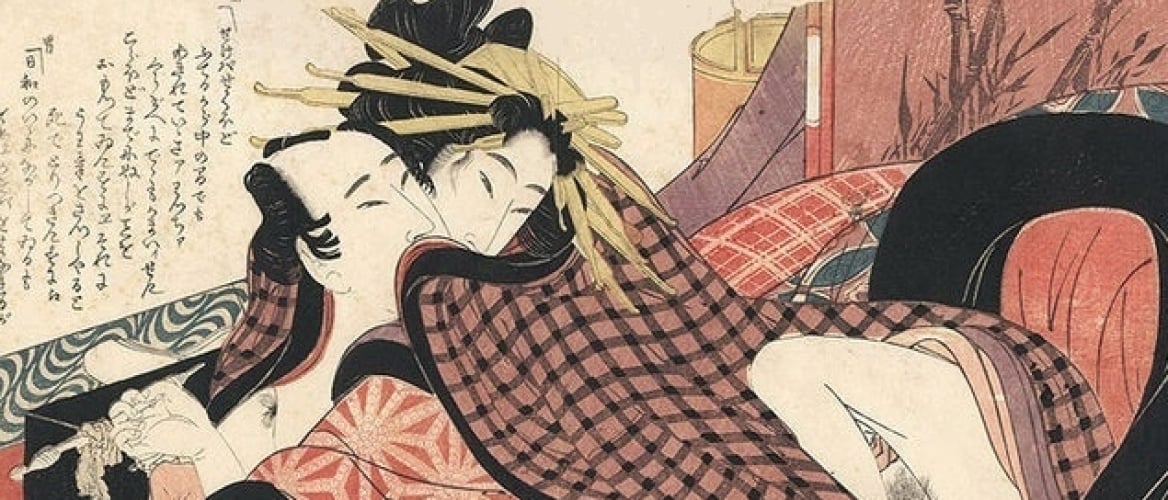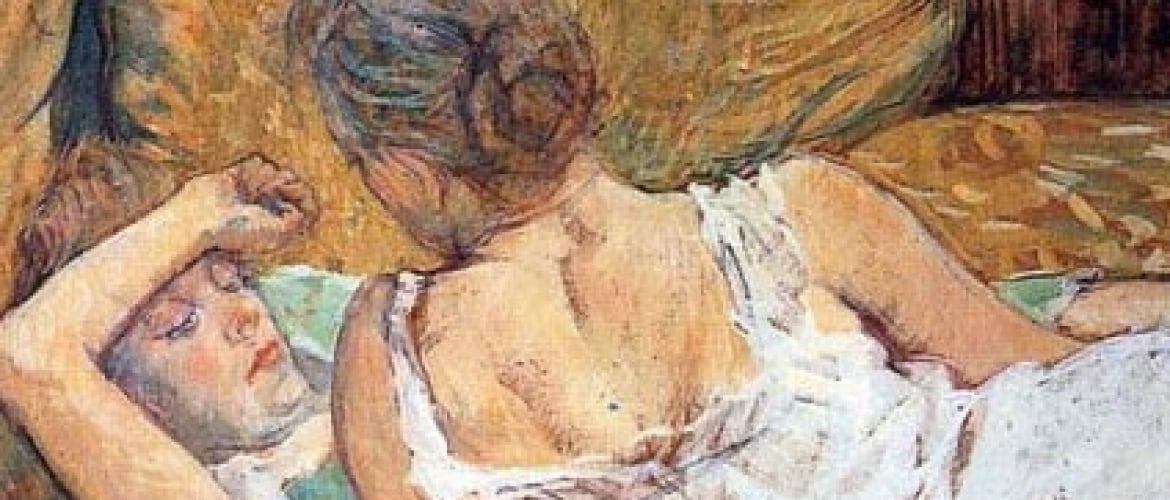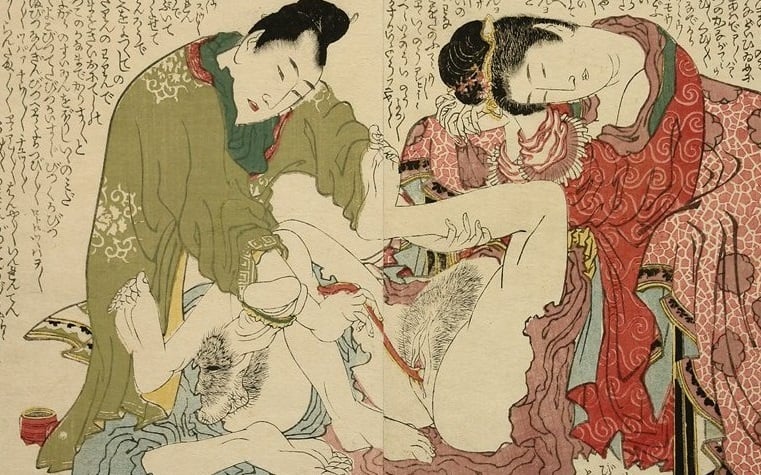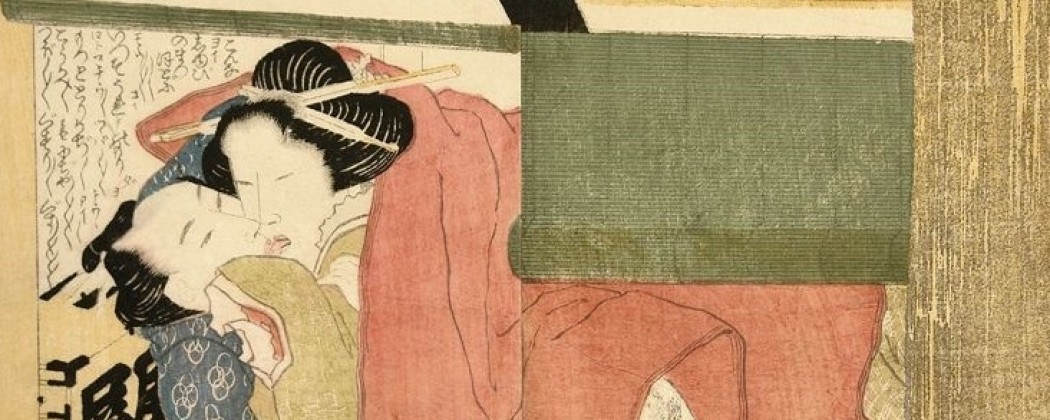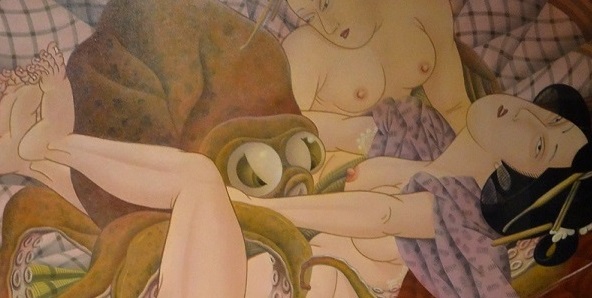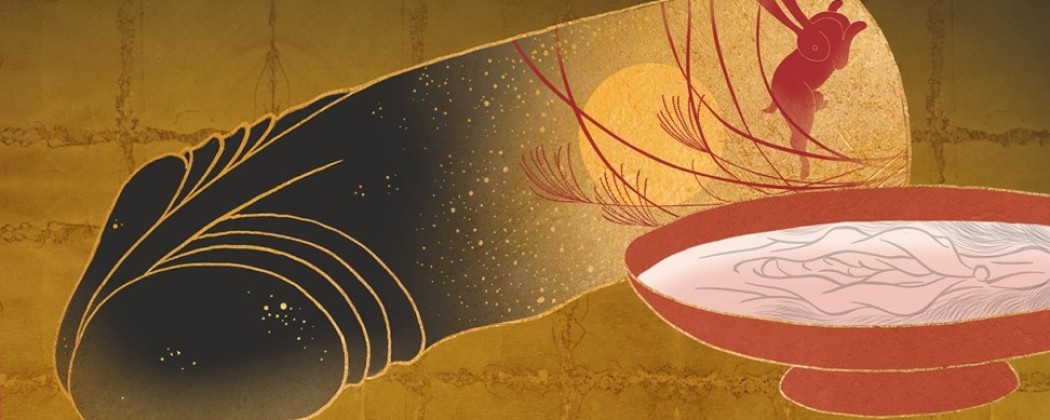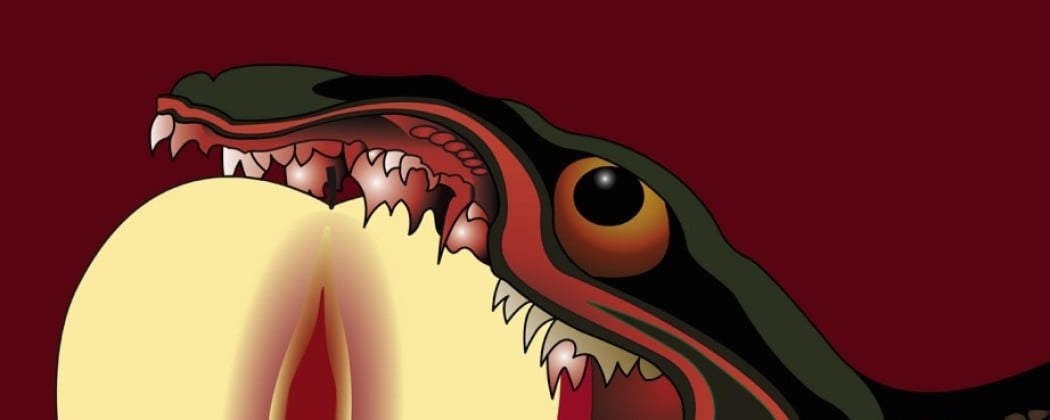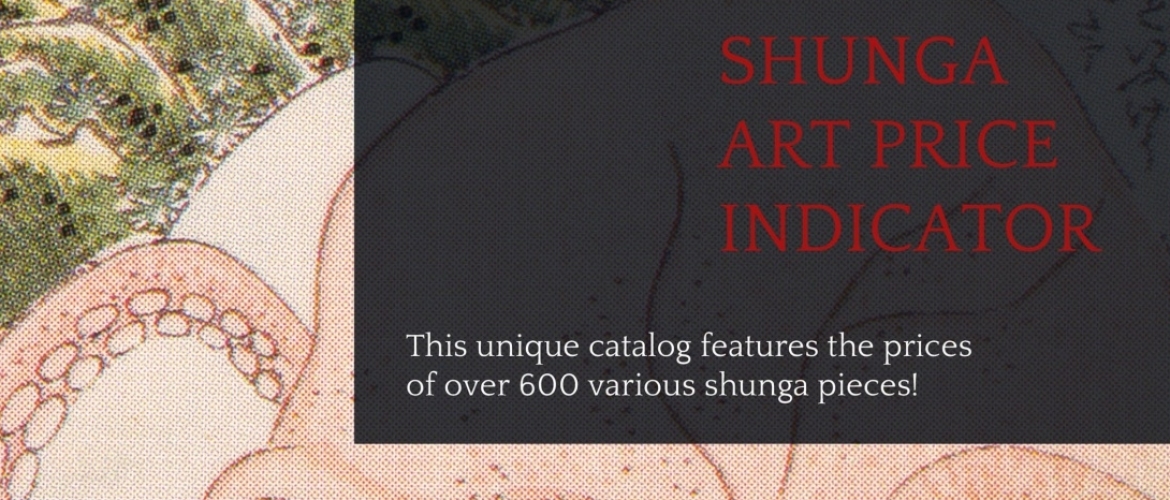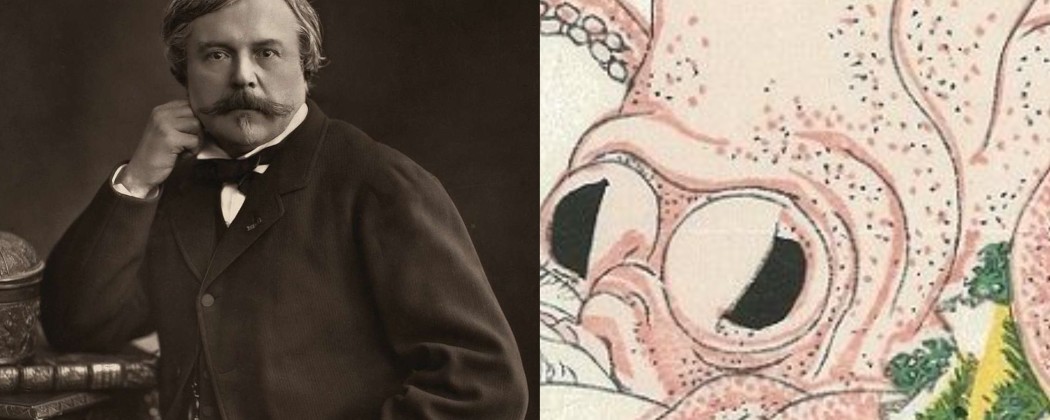
The famous art critic, writer and collector Edmond de Goncourt (1822-1896) known for his erudite (although somewhat naive) hymn on The Dream of the Fisherman’s Wife began acquiring erotic Japanese prints in October 1863. He writes in his journal:
Obscenity
‘The other day I bought some albums of Japanese obscenities. They delight me, amuse me, and charm my eyes. I look on them as being beyond obscenity, which is there, yet seems to be there, and which I do not see, so completely does it appear into fantasy.
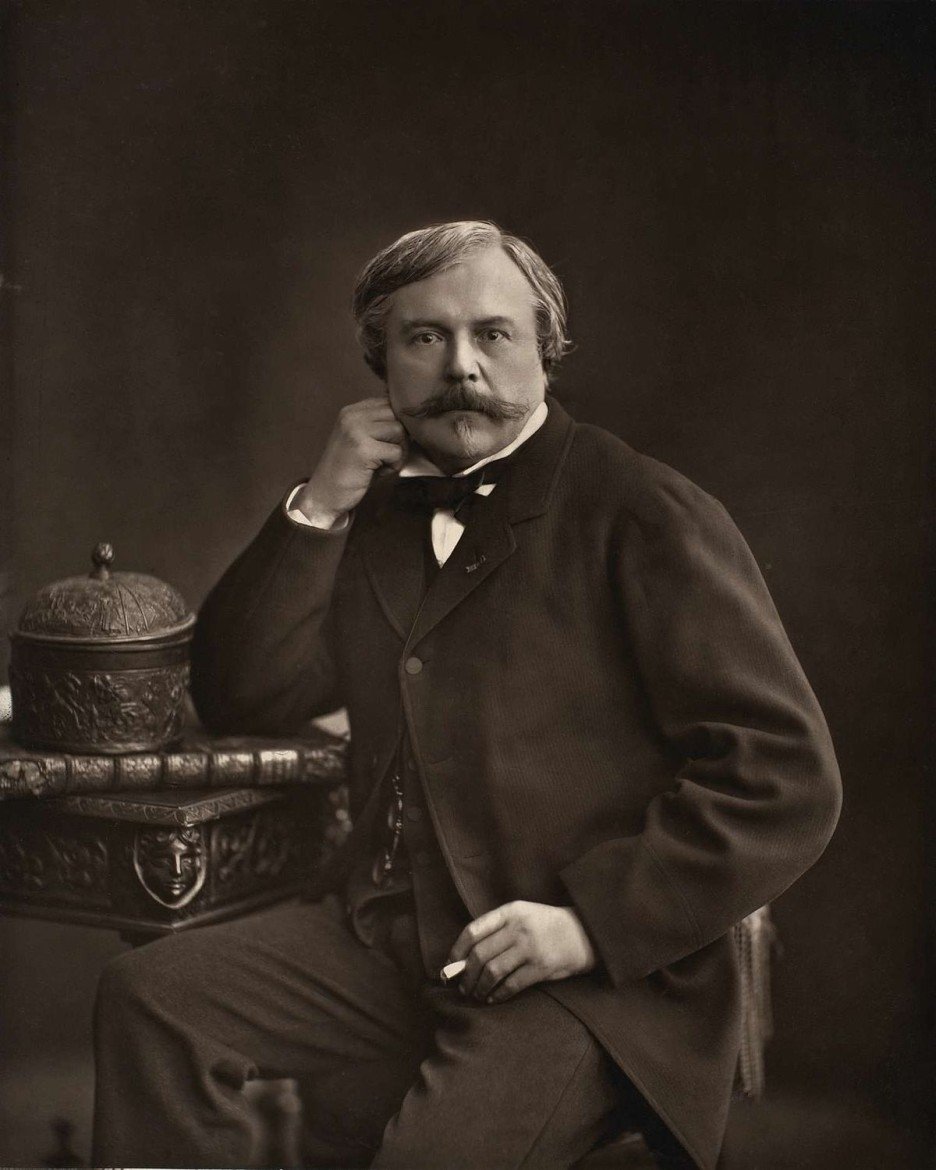
Fig.1. ‘Picture of Edmond de Goncourt‘ (Source: Terrence Crimmins)
Violent Lines
The violence of the lines, the unexpected in the conjunctions, the arrangements of the accessoires, the caprice in the poses and the objects, the picturesqueness, and, so to speak, the landscape of the genital parts. Looking at them, I think of Greek art, boredom in perfection, an art that will never free itself from the crime of being academic!’
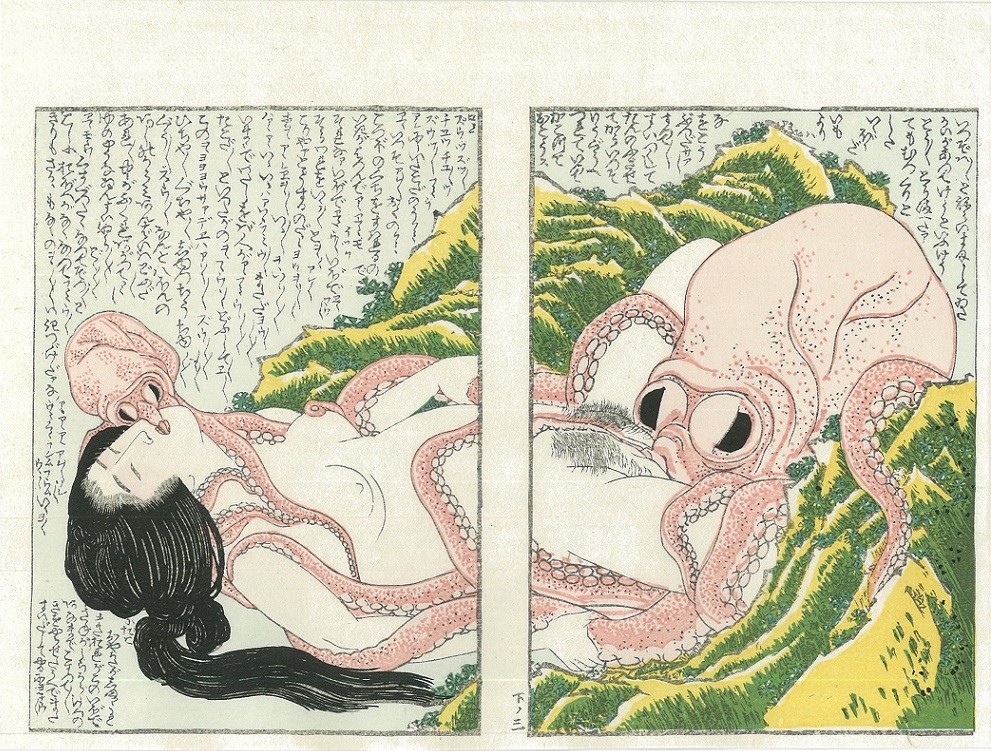
Fig.2. 2018 Remake of The Dream of the Fisherman’s Wife by Yuuya Shimoi
Siegfried Bing
Edmond de Goncourt and his brother Jules obtained their prints in various shops, such as Mme Desoye’s and later from the two major ukiyo-e dealers Siegfried Bing and Hayashi Tadamasa. It was especially the brother’s collection that caught the eye. Among his most admirable treasures were shunga prints, including Hokusai‘s Kinoe no komatsu album.
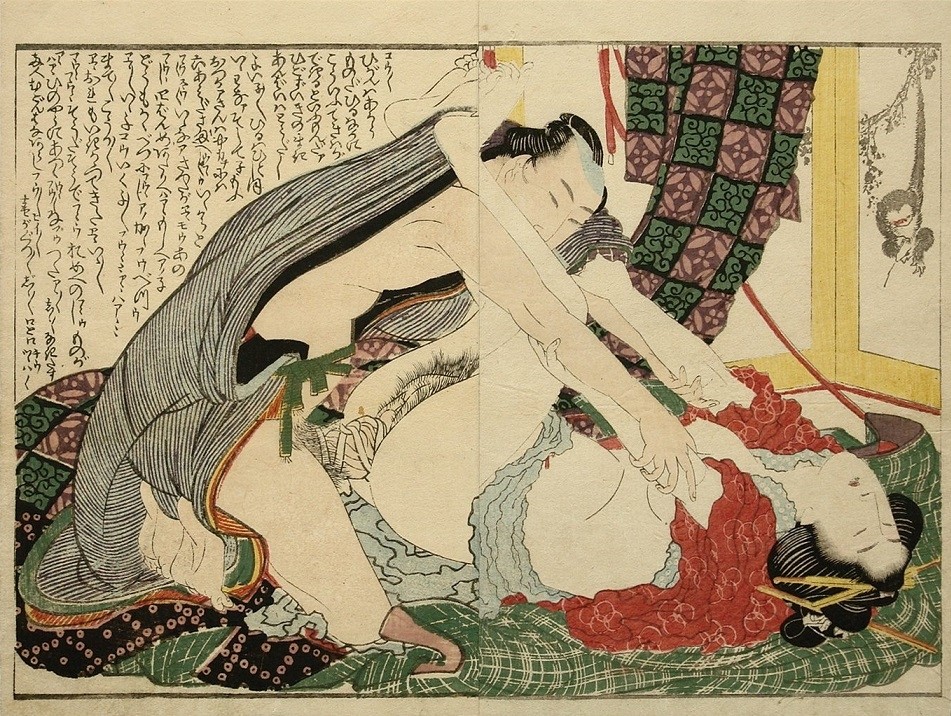
Fig.3. ‘Sensual couple at an ecstatic moment. The man sports a dried taro stalk (higozuiki) around his penis to intensify the woman’s pleasure‘ (c.1814) from the series ‘Kinoe no komatsu (Young Pine Saplings)‘ by Katsushika Hokusai (1760-1849)
Sculptural Twining
These erotic works were also eagerly viewed by their friends such as Rodin, who expressed surprise, curiosity and admiration. He adored the female’s drooping heads, the lines, the unadulterated rendering of the coitus, and the sculptural twining of the bodies.
Toulouse-Lautrec and Picasso
A lot of artists obtained their erotic Japanese prints in London (such as Beardsley) and Paris (Zola, Huysmans, Toulouse-Lautrec, and in the new century, Rodin and Pablo Picasso). Toulouse-Lautrec obtained a copy of Utamaro‘s most revered album Utamakura (Fig.4) from Goncourt.
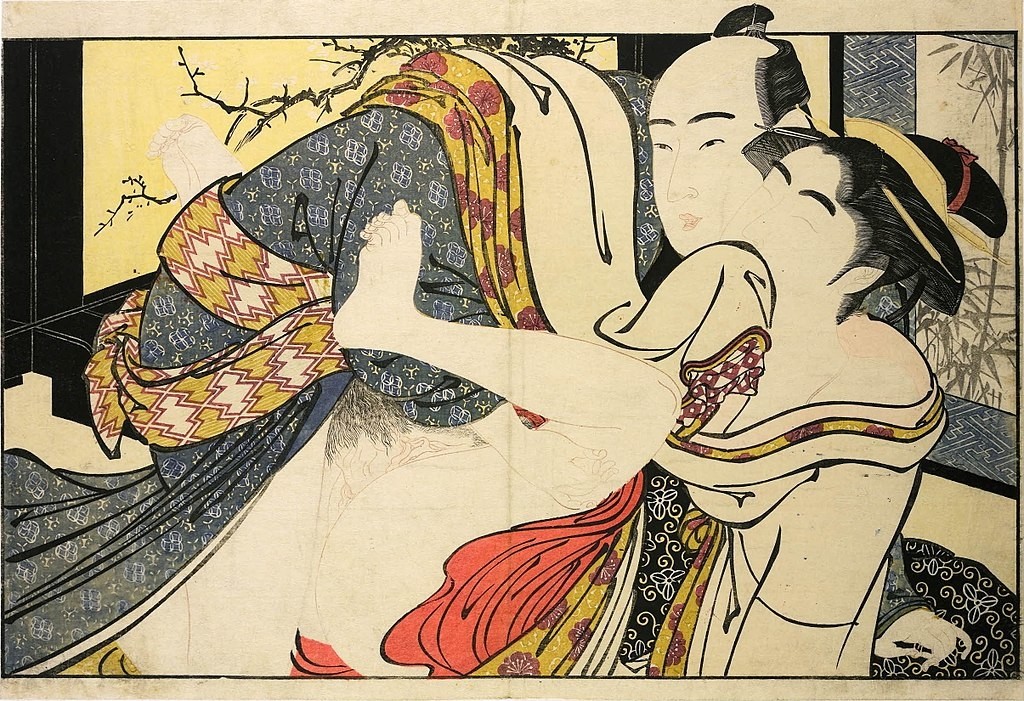
Fig.4. ‘Samurai and the geisha Tomimoto Toyohina‘ (c.1788) from the series ‘Utamakura (Poem of the Pillow)‘ by Kitagawa Utamaro (Picture: Wikipedia)
Outamaro and Hokousaï
It was, Edmond de Goncourt, who like no other stimulated public enthusiasm for Japanese art and who (like Frank Loyd Wright did a couple of decades later) promoted the artistic merits of shunga prints in his monographs on Kitagawa Utamaro (Outamaro, 1891) and Katsushika Hokusai (Hokousaï, 1896).
In the latter Goncourt describes The Dream of the Fisherman’s Wife (Fig.2) in the following haunting terms:
Click HERE for an extensive two-part article on Toulouse-Lautrec’s fascination with Japanese erotica….!!
Source: ‘Secret Images – Picasso and the Japanese Erotic Print ‘ published by the Museu de Picasso de Barcelona.
Why does shunga appeal to you? Leave your reaction in the comment box below….!!

